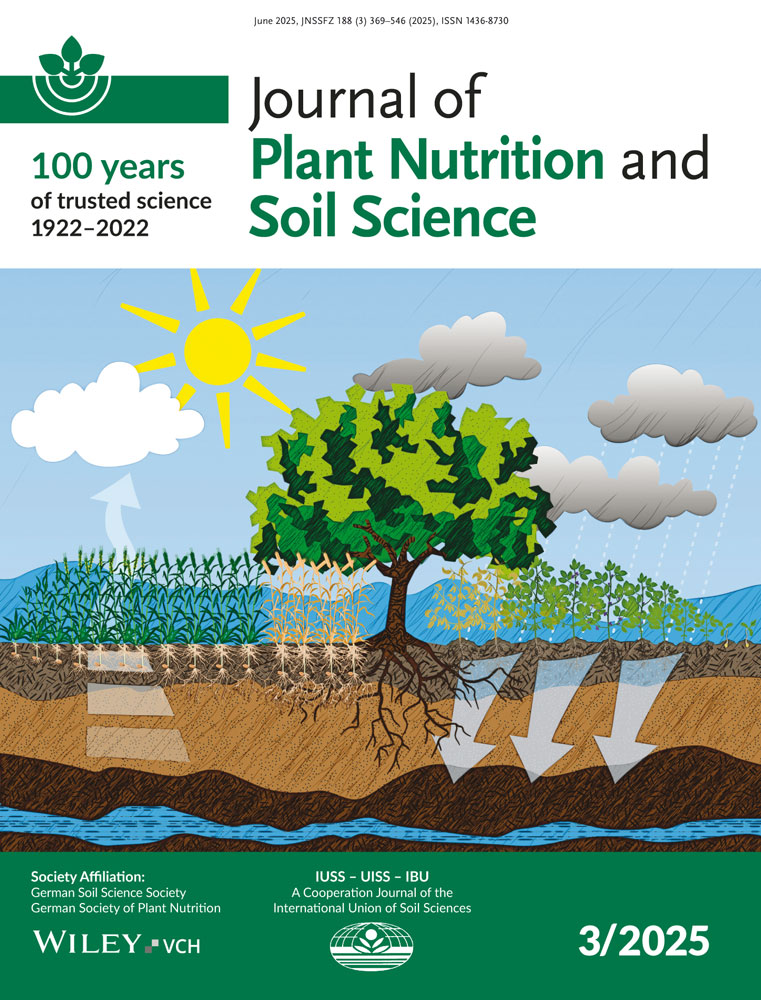Geo-ecological soil features and the vegetation pattern in an arid dune area in the Northern Negev, Israel
Abstract
enSoils are suggested to be an important factor influencing the vegetation pattern. In order to prove this hypothesis in an arid and sandy Negev ecosystem of longitudinal dunes and interdune corridors near Nizzana, Israel, the distribution of soil units and plant communities were compared on a very small-distance level. The Nizzana site has a size of nearly 100 ha. 250 soil pits with 3–5 horizons were mapped and sampled within the soil geographical monitoring. Soil water capacity and cation exchange capacity were estimated from the field data. In addition 176 plots of 100 m2 were established around the soil pits with emphasis on plants, coveting the environmental gradient across the dune ridges. Plant mapping plots were arranged into groups with the same dominating perennial species and a key for the vegetation mapping was developed. In the investigated desert site topography, soil surface crust, soil texture and salt content partly can explain the distribution of plant communities. A soil classification proposal is based on these parameters and is a useful tool to indicate correlations between soil units and the vegetation pattern. Nevertheless, dependent on topography and surface and/or subsurface water flow as well as the occurrence of “fertile islands” the moisture and nutrient regimes influence the vegetation pattern with respect to plant growth to a greater extent than the soils themselves.
Abstract
deGeo-ökologische Bodenmerkmale und Vegetationsmuster eines ariden Dünengebietes in der nördlichen Negev, Israel
Böden haben einen bedeutenden Einfluß auf das Vegetationsmuster. Zur Überprüfung dieser These wurde in einem ariden und sandigen Ökosystem des Negev, Israel, mit langen Dünenrücken und weiten Zwischentälern, die Boden- und Pflanzengeographie auf großer Maßstabsebene verglichen. Das Nizzana-Gebiet hat eine Fläche von ca. 100 ha. 250 Bodenprofile mit 3–5 Horizonten wurden während der bodengeographischen Studien aufgenommen und beprobt. Die Wasserhalte- und Kationenaustauschkapazität der Böden wurde über Felddaten abgeschätzt. Zusätzlich wurden von 176 100-m2-Flächen um die Bodenprofile die Pflanzendecke kartiert. Die Vegetationskartierung und Bildung von Pflanzengesellschanen erfolgte anhand dominanter mehrjähriger Pflanzenarten. Im Untersuchungsgebiet bestimmten die Topographie, die Ausprägung einer Kruste auf der Bodenoberfläche sowie die Textur und der Salzgehalt der Böden die Verteilung der Pflanzengesellschaften. Ein Klassifikationsvorschlag zur Bodenaufnahme orientiert sich an diesen Parametern. Dieser scheint ein geeignetes Instrument, um Korrelationen zwischen Bodenformen und Vegetationsmuster aufzuzeigen. Andererseits lassen die Ergebnisse vermuten, daß offensichtlich das Wasser- und Nährstoffregime, welches von der Topographie, vom Oberflächenabfluß sowie von unterirdischem Hangzugwasser und dem Auftreten von “fruchtbaren Inseln” beeinflußt wird, stärker das Wachstum der Pflanzen prägt, als die Böden selber.




